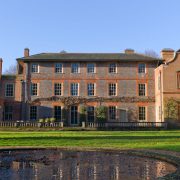Planning permission – the good, the bad and the ugly. Part Two.
In part one of our series on planning permission, we explored what happens when planning is successfully navigated. But what happens when things go wrong? Shaun Soanes explores the consequences of planning breaches and why it’s better to get it right the first time around.
Not every listed building gets the treatment it deserves.
While there are a range of factors that can’t be prevented when it comes to old, listed buildings – wear and tear, fire and flooding for example – there will always be those who try to circumnavigate the system when it comes to property renovations, and cause a huge amount of damage in the process. This tends to happen when owners try to go it alone and don’t consult the experts, failing to properly investigate and address the delicate idiosyncrasies of a unique listed property.
Planning breaches
Ploughing ahead with alterations or renovations to a listed building is highly unadvisable, not to mention illegal. The failure to obtain planning permission on a listed building is referred to as a ‘planning breach’, and this occurs when work is carried out on a development or a building without permission being granted.
If your application was refused, or you never put it through in the first place, then going ahead with work could leave you facing both criminal charges and the cost of restoring the building to its former state.
If the council suspect a planning breach, they can issue an enforcement notice requiring you to put things back to the way they were. Ignoring or disobeying the enforcement notice is illegal.
You can of course appeal against any enforcement notices, but if the verdict goes against you and you still refuse to comply, then you could be prosecuted.
Put simply, it is far more sensible to follow the rules.
When things go wrong
An example of when things go badly wrong with a grade listed II* building is with that of a project which the team at NJA were brought in to work on.
After receiving a series of poor quality and unauthorised alterations over the course of a decade, the historic country house was left neglected and in demise. The unauthorised work, carried out by a set of previous owners, had seriously eroded the building’s character, and it was a sad example of what happens when works are carried out to a historic building without proper guidance.
There were nine enforcement notices served on the property by the local authority, all still in force when the current owners bought the house, making the restoration project a very unusual one.
The work itself involved unpicking modern intrusive repairs, modifying some of the more incongruous alterations, and rectification works to comply with the nine enforcement notices. There was also a huge amount of restoration work that needed to be done, detailing appropriate to its 17th and 18th century history.
The story ends happily however with the Grade II* listed country house, restored to its previous splendour with the help of Nicholas Jacob Architects and its caring new owners. It now benefits from custodians who understand its significance and more importantly, who intend to maintain it. This was further acknowledged by the Georgian Society who accredited the building with an award for the conservation and restoration works, in 2016
Getting it right first time
Restoring an old building can be a hugely rewarding process and there really is no need for things to go wrong if you follow the rules and you consult with professionals.
There are a number of professionals – from architects and building surveyors to structural engineers and quantity surveyors – who can help you plan and carry out work. It is important to choose someone who has the knowledge and experience necessary to work on older buildings. This is because the professionals are aware of the problems and pitfalls associated with such work and are well qualified to specify appropriate and cost effective repairs to older buildings.
At Nicholas Jacob Architects, restoring old buildings is part of our area of expertise. We have a number of staff who are specifically accredited in building conservation. We work in close association with the conservation officers to keep the period detailing and we are skilled at using salvaged materials as well as ensuring anything new is designed in keeping with the existing site. This makes the process for both owner and building as smooth as possible.






Leave a Reply
Want to join the discussion?Feel free to contribute!